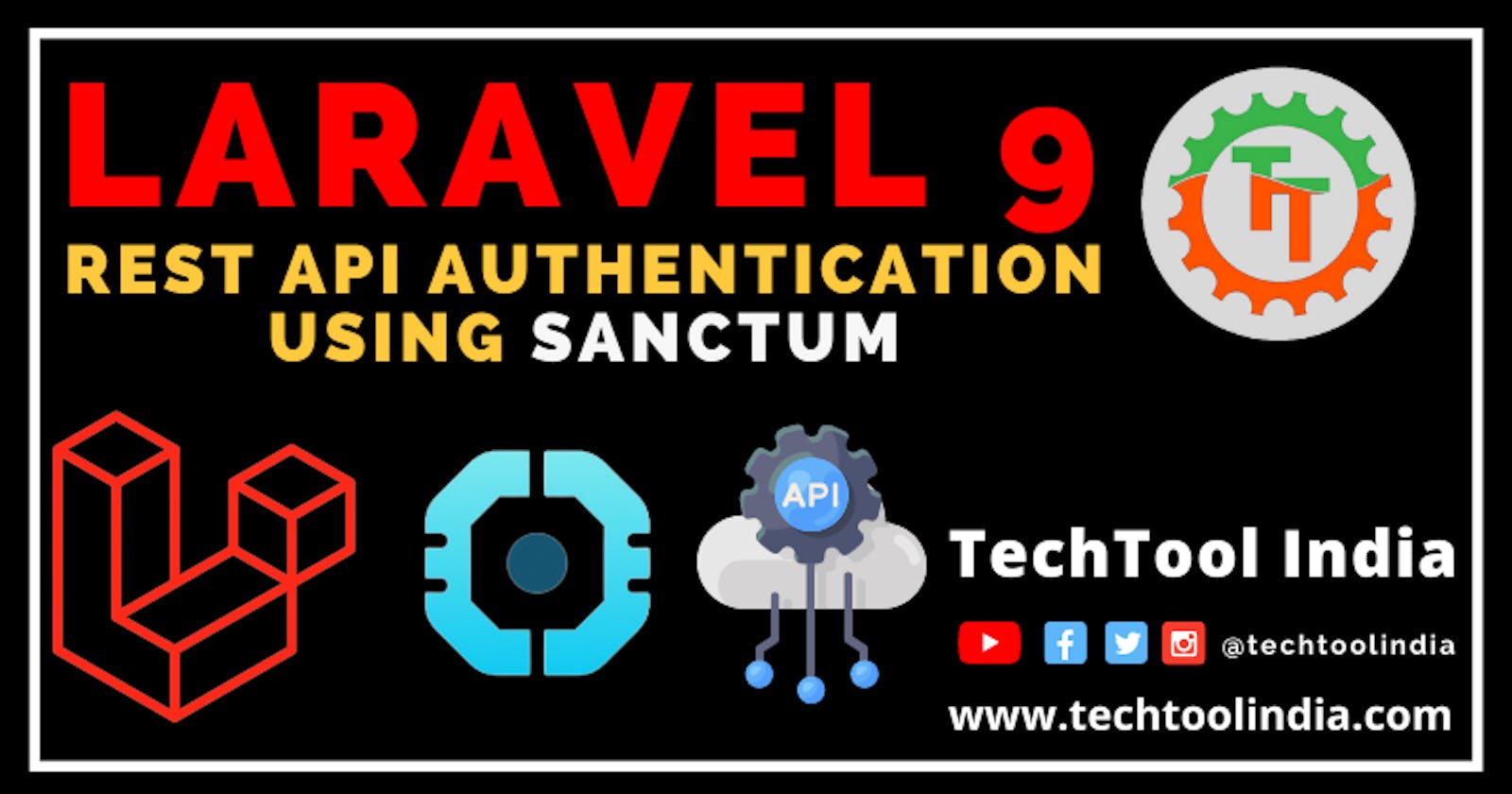Make REST API AUTHENTICATION in LARAVEL 9 USING LARAVEL SANCTUM
Laravel Sanctum provides a featherweight authentication system for SPAs (single page applications), mobile applications, and simple, token-based APIs.
Installation Steps
If you are not using LARAVEL 9 you need to install LARAVEL Sanctum Otherwise you can skip the installation step.
Step 1
Install via composer
composer require laravel/sanctum
Step 2
Publish the Sanctum Service Provider
php artisan vendor:publish --provider="Laravel\Sanctum\SanctumServiceProvider"
Step 3
Migrate The Database
php artisan migrate
USING SANCTUM IN LARAVEL
User HasApiTokens Trait in App\Models\User
In Order to use Sanctum we need to use HasApiTokens Trait Class in User Model.
User Model should look like.
<?php
namespace App\Models;
use Illuminate\Contracts\Auth\MustVerifyEmail;
use Illuminate\Database\Eloquent\Factories\HasFactory;
use Illuminate\Foundation\Auth\User as Authenticatable;
use Illuminate\Notifications\Notifiable;
use Laravel\Sanctum\HasApiTokens;
class User extends Authenticatable
{
use HasApiTokens, HasFactory, Notifiable;
/**
* The attributes that are mass assignable.
*
* @var array<int, string>
*/
protected $fillable = [
'name',
'email',
'password',
];
/**
* The attributes that should be hidden for serialization.
*
* @var array<int, string>
*/
protected $hidden = [
'password',
'remember_token',
];
/**
* The attributes that should be cast.
*
* @var array<string, string>
*/
protected $casts = [
'email_verified_at' => 'datetime',
];
}
API Authentication Routes
Create AuthController to handle all authentication realted to API
php artisan make:controller Api\\AuthController
In routes\api.php file update the API
Route::post('/auth/register', [AuthController::class, 'createUser']);
Route::post('/auth/login', [AuthController::class, 'loginUser']);
Now update AuthContoller with
<?php
namespace App\Http\Controllers\Api;
use App\Models\User;
use Illuminate\Http\Request;
use App\Http\Controllers\Controller;
use Illuminate\Support\Facades\Auth;
use Illuminate\Support\Facades\Hash;
use Illuminate\Support\Facades\Validator;
class AuthController extends Controller
{
/**
* Create User
* @param Request $request
* @return User
*/
public function createUser(Request $request)
{
try {
//Validated
$validateUser = Validator::make($request->all(),
[
'name' => 'required',
'email' => 'required|email|unique:users,email',
'password' => 'required'
]);
if($validateUser->fails()){
return response()->json([
'status' => false,
'message' => 'validation error',
'errors' => $validateUser->errors()
], 401);
}
$user = User::create([
'name' => $request->name,
'email' => $request->email,
'password' => Hash::make($request->password)
]);
return response()->json([
'status' => true,
'message' => 'User Created Successfully',
'token' => $user->createToken("API TOKEN")->plainTextToken
], 200);
} catch (\Throwable $th) {
return response()->json([
'status' => false,
'message' => $th->getMessage()
], 500);
}
}
/**
* Login The User
* @param Request $request
* @return User
*/
public function loginUser(Request $request)
{
try {
$validateUser = Validator::make($request->all(),
[
'email' => 'required|email',
'password' => 'required'
]);
if($validateUser->fails()){
return response()->json([
'status' => false,
'message' => 'validation error',
'errors' => $validateUser->errors()
], 401);
}
if(!Auth::attempt($request->only(['email', 'password']))){
return response()->json([
'status' => false,
'message' => 'Email & Password does not match with our record.',
], 401);
}
$user = User::where('email', $request->email)->first();
return response()->json([
'status' => true,
'message' => 'User Logged In Successfully',
'token' => $user->createToken("API TOKEN")->plainTextToken
], 200);
} catch (\Throwable $th) {
return response()->json([
'status' => false,
'message' => $th->getMessage()
], 500);
}
}
}
Protect API With Authentication we need to use auth:sanctum middleware.
Route::apiResource('posts', PostController::class)->middleware('auth:sanctum');
Here are the results.



The complete Tutorial is below in the video.
If you face any issues while making REST API, please comment on your query.
Thank You for Reading
Reach Out To me. Twitter Instagram TechToolIndia YouTube Channel

